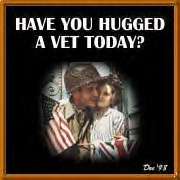To the Texans of the 3rd Armored Division, April 21 was a significant date for the opening assault on Dessau. It was San Jacinto day. Moving up for the final drive, troops of the "Spearhead" Division were high strung and nervous. They had been fighting almost continuously for the past two months, and this entry into Dessau was almost certain to mean the end of 3rd Armored Division campaigning. Already Russian shells were falling beyond the Elbe, and thousands of German troops were surrendering all along the line. The last days of the war in the west were not pleasant.

On April 21, Task Force Welborn attacked Dessau from the south. Colonel Boles, leading Task Force " X" spearheaded through Alten to enter the city. The men of Colonel Richardson's command battled heavy resistance in Jessnitz, while Task Force Hogan took Kleinkuhnau and Grosskuhnau, encountering road blocks, small arms fire, artillery and mortar concentrations.
The battle for Dessau developed into a furious house to house melee. Crack German officer candidates and non-commissioned officers from the Rosslau-Dessau army school of combat engineering, were thrown into the battle. The elaborate "Panzersperre" road blocks and other obstacles constructed by these men indicated that they were of the highest quality. In addition to being well trained engineers, these school troops were expert riflemen. Colonel Orr, attacking from the southwest, found that his "Blitz Doughs" were facing an enemy whose every soldier might be considered a sharpshooter.

In spite of a resistance born of desperation, much of Dessau was cleared by 1800 hours on April 21. However, there was still heavy fighting ahead. "D" Company of the 32nd Armored Regiment, working with attached infantry, encountered a well defended position on the north outskirts of the city on April 22. The enemy was well dug in and protected by wire barricades and other obstacles. Mine fields were expertly covered with small arms fire, mortars, and by panzerfaust teams. Bitter fighting went on until 2400 hours that day, but tanks and supporting infantry were unable to advance.
At 0600 hours on April 23rd, the 2nd Platoon of "D" Company, led by Lt. Lewis Lively, and one platoon of the attached infantry, reconnoitered to the east in preparation for an encircling movement. The enemy wasn't fooled; he was ready with small arms, artillery, and a smoke screen. Lively changed his tactics. Deploying his platoon in line, he ordered tank commanders to open up with all guns and move forward! It was a simple frontal attack, and yet the American fire power was so great that German defenders were thrown into a panic. Twenty-five yards from the first Nazi fire trenches, Kraut soldiers began to surrender. They came limping through the mist and smoke of battle, waving handkerchiefs and other bits of white material. The attack went on through the second line of resistance and reached the Mulde River, one of the "Spearhead" Division's final objectives.

Dessau provided a last flurry of resistance on April 22 and 23. On the following day all of the city was cleared and Combat Command "A" went on to mop up the last of the Rosslau-Dessau engineer school troop garrison. At Division Forward Echelon in Lingenau, a barrage of high explosive shells hit the CP area. A barn which housed the engineer kitchen was hit and set afire and several men were seriously burned. It was a grim farewell to combat.
By April 25 the 9th Infantry Division had relieved all "Spearhead" elements on the now stable front. It was like a dream come true to those men of the old 3rd who still remained unscathed.

Weary tankers, red eyed and grimy, tooled their big Shermans back over the roads of conquest. The "Blitz Doughs," sprawling in personnel half-tracks, still had weariness steeped in their bones and the frontline look in tired, red-rimmed eyes; but they were happy. It was a wonderful feeling, for, no matter how the words are twisted, a combat soldier has only three things to look forward to: a wound, death, or cessation of hostilities. There had been times when the first two were alternatives, and the last - a dream in the dim future.
Additional Sources:
www.worldwar2aces.com
www.tridentmilitary.com
klub.chip.pl
home.sandiego.edu
www.wwiivehicles.com
www.randomhouse.com




